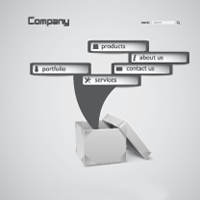Microlearning - the Future of Workplace Learning

Microlearning: The Trend Towards Shorter and More Effective Workplace Training
In the fast-paced world of modern business, time is a precious commodity. Employees have less time to devote to learning and development, and employers need to ensure that their training programs are both effective and efficient. This has led to a trend towards microlearning in the workplace – a new approach to learning that breaks down complex information into smaller, easily digestible chunks.
What is Microlearning?
Microlearning is a form of learning that involves short, focused training sessions that typically last between five and fifteen minutes. These sessions can take many forms, from videos and podcasts to quizzes and interactive simulations. The goal is to provide learners with the information they need in a way that is easy to understand and retain.
Why Microlearning is Gaining Popularity
There are several reasons why microlearning is gaining popularity in the workplace. Firstly, it is more effective than traditional learning approaches. Studies have shown that learners have better retention rates when they are presented with smaller, more focused chunks of information. This is because it is easier for learners to understand and retain information when it is presented in a way that is tailored to their individual learning needs.
Secondly, microlearning is more cost-effective than traditional learning approaches. It is easier and less expensive to produce short, focused training sessions than it is to produce longer, more comprehensive training materials. This is particularly important for businesses that need to keep their training costs under control.
Finally, microlearning is more convenient than traditional learning approaches. Thanks to technology, learners can access microlearning materials on their smartphones, tablets, and laptops. This means that they can fit learning into their busy schedules, whether they are on a lunch break, commuting to work, or waiting for a meeting to start.
Real-Life Examples of Microlearning in the Workplace
There are many real-life examples of microlearning being used effectively in the workplace. For example, McDonald's has used microlearning to train its employees on new menu items. The company created short, animated videos that explained the new menu items in a way that was easy to understand and retain. This approach proved to be more effective than traditional training methods, with employees showing higher levels of engagement and retention.
Another example is SAP, the software company. SAP has used microlearning to train its employees on new software features. The company created short, interactive simulations that allowed employees to learn by doing. This approach proved to be more effective than traditional training methods, with employees showing higher levels of proficiency and confidence.
Statistics on the Effectiveness of Microlearning
There are several statistics that highlight the effectiveness of microlearning in the workplace. For example, a study by Deloitte found that learners have a retention rate of just 10% after a week when using traditional training methods. However, when microlearning is used, learners have a retention rate of 90%.
Another study by the Association for Talent Development found that microlearning can reduce training time by up to 50%. This means that employees can learn new skills and knowledge more quickly and efficiently, without sacrificing quality.
Conclusion
Microlearning is a trend that is here to stay. It is more effective, cost-effective, and convenient than traditional learning approaches. Real-life examples and statistics have shown that it can lead to higher engagement, retention, and proficiency among employees. As the business world continues to evolve, it is likely that microlearning will become an increasingly important tool for training and development in the workplace.











